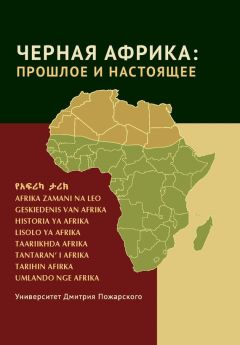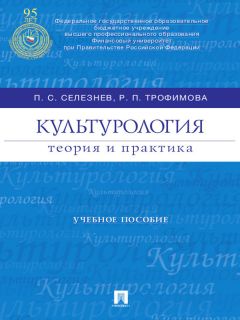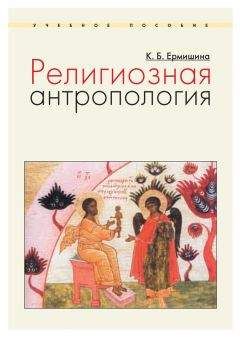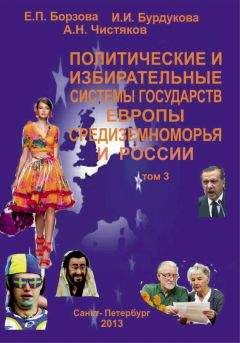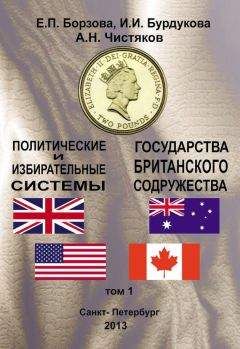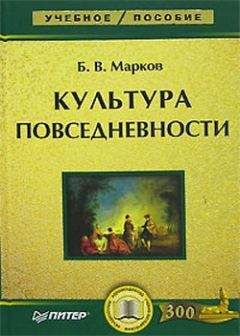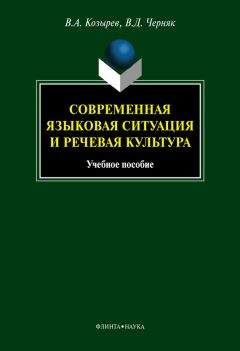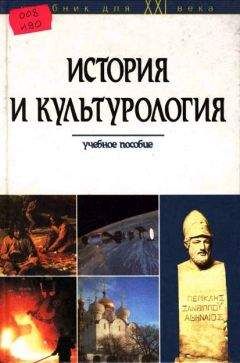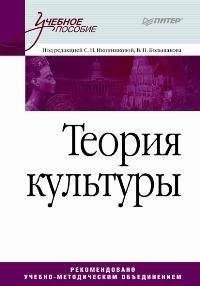Алексей Минченков - Glimpses of Britain. Учебное пособие
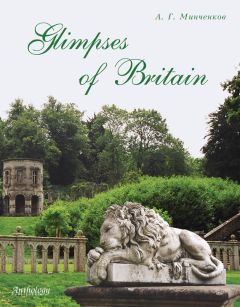
Все авторские права соблюдены. Напишите нам, если Вы не согласны.
Описание книги "Glimpses of Britain. Учебное пособие"
Описание и краткое содержание "Glimpses of Britain. Учебное пособие" читать бесплатно онлайн.
Учебное пособие посвящено истории и современной жизни Великобритании. В хронологическом порядке описаны основные исторические события и личности, оказавшие влияние на формирование британского самосознания и культуры. Отдельное внимание уделено истории архитектурных стилей. Подробно рассматривается современное состояние монархии, системы государственного и местного управления, парламентская и судебная системы, а также вопросы, связанные с национальным наследием и государственной символикой. Пособие включает в себя переводческий глоссарий с фонетической транскрипцией и хрестоматию, содержащую газетно-журнальные тексты страноведческого характера и выходящую отдельной книгой. Издание богато иллюстрировано авторскими фотографиями.
Пособие предназначено для студентов и школьников, занимающихся страноведением Великобритании, преподавателей, переводчиков и всех, кто интересуется историей, культурой и современной жизнью этой страны.
The Romans introduced new vegetables and fruits: cabbage, peas, apples, plums, cherries and walnuts. They were the first settlers on the British Isles who made formal gardens, in towns and around villas, and brought the domestic cat.
The Romans were tolerant in matters of religion, except in the case of cults that involved human sacrifice. The Druids used to burn people alive to mollify their gods and this practice was suppressed. Otherwise the Celtic gods lived on side by side with the Roman ones, the most important of whom were Jupiter, Juno and Minerva. The Roman temple built at Bath, for example, was dedicated to both the Roman goddess Minerva and the Celtic water deity Sulis. Christianity also reached Britain. Its early history is extremely obscure until, at the beginning of the 4th century (in 313, when the Emperor Constantine was converted) [5] Christianity became the official state religion of the Roman Empire. In 314 the bishops of York, London and Lincoln went from England to a Council of the Church held at Arles. In 391 the Emperor Theodosius ordered the closure of all pagan temples. It is likely that many later Anglo-Saxon churches in fact go back to the Roman period.
The Roman Garden in Chester
All in all, the Romans left an indelible legacy, one which contributed to the shape of what was to become English civilization, for the Romans never quite conquered the Celtic territories of Cornwall, Wales, or Scotland. The English language is unique among its Germanic cousins for the very large number of words which came into it from Latin.
When the Romans went they left behind a leaderless and defenceless people (in fact the Emperor Honorius sent his famous directive telling the British that they must now defend themselves), and these were no match for the fierce tribes that came to the British Isles. However, the change of civilization didn’t occur overnight. It was only by the 6th century that a different map of Britain began to emerge, one made up of a series of small independent kingdoms. The long process by which Roman Britain moved into the Anglo-Saxon kingdoms was a gradual one of adaptation. For a long time the Anglo-Saxons were a tiny minority that lived in the midst of an overwhelmingly Romano-Celtic population.
Invaders came from every direction. There were the Scots from Ireland who attacked the west, the Picts from the far north who penetrated south, and the Anglo-Saxons who landed in the south-east and East Anglia. The Anglo-Saxons were made up of various tribes who came from an area stretching between the mouths of the rivers Rhine and Elbe. A group of them was called Engle and from that came the word England. The Anglo-Saxons were pagans who worshipped gods such as Woden, Thor and Freya, whose names were to give the English language the words Wednesday, Thursday and Friday. The Anglo-Saxons had no interest in the Roman way of life, their society was differently organized. At the top came the nobles who fought, next the ceorls (freemen) who farmed and, at the bottom, slaves. The Anglo-Saxons didn’t live in towns, but in wooden huts. Their whole existence was war. Fighting bound them together in ties of loyalty to their leader. Loyalty was seen as the greatest of human virtues and the most detestable of all crimes was the betrayal of a king.
The Angles and Saxons took possession of all the land as far as the mountains in the north and west, and divided it into a handful of small kingdoms. In the south-east there was the kingdom of Kent and the south Saxon kingdom (Sussex), in the east – the kingdom of East Saxons (Essex), in the Midlands – Mercia, in the north – Northumbria, in the south-west – Wessex. Eventually the Christian Celts were wholly defeated; those who escaped death were pushed back into the mountains of Wales and Scotland, and also to Ireland, where their languages – Welsh, Gaelic and Erse – can still be heard.
In 597 Pope Gregory sent a mission to convert the Anglo-Saxons to Christianity. It is believed that the mission was inspired by the pope meeting a group of fair-haired youths in Rome. He asked them who they were and what their country of origin was. They answered that they were Engles, Angli in Latin. The pope is said to have remarked that he saw them not as Angli, but Angeli, that is angels. The papal mission was led by St. Augustine, and the missionaries made their base at Canterbury. The king of Kent, Ethelbert, fearing magic, insisted that his meeting with the missionaries take place beneath an open sky. Out of this came the grant of a place in Canterbury in which they could live and had permission to preach. Soon there were many converts, old churches began to be restored and new ones built. After a year Ethelbert himself became Christian. Augustine was consecrated Bishop and later Archbishop of Canterbury. Yet, that mission was only the beginning of the conversion of the Anglo-Saxons, a task that took most of the 7th century to achieve.
Monasteries such as Canterbury became centres of teaching and learning, where both Greek and Latin were taught, as well as so called Seven Liberal Arts that included the trivium – grammar or the art of writing, rhetoric or the art of speaking and the dialectic, the art of reasoned argument – and the quadrivium – arithmetic, geometry, astronomy and music. The most famous of all these scholars was the monk Bede (better known as the Venerable Bede), who wrote the History of the English Church.
Thus, by the 8th century a new society, deeply Christian, had come into being, only to face a new wave of invasions as fierce Northern people, the Vikings, began to attack from beyond the seas.
The story of Viking invasions is dramatically told in the Anglo-Saxon Chronicle, which traces how these raids accelerated during the second half of the 8th century. The Vikings were a people from Scandinavia, mainly Norway, Sweden and Denmark, whose life originally consisted in working the land and fishing, but who went on to attack and later settle in Britain, Northern France, Russia, Iceland and Greenland. One of the basic reasons for their endless raids was that their homelands no longer produced enough to support them. Another was the nature of their society that glorified fighting. The Vikings were pagan and believed that the gods rewarded fighters above all and that bloodshed and death in battle were the true paths to wealth and happiness.
One by one the kingdoms of the Anglo-Saxons fell until there was only Wessex left, where a young man called Alfred came to the throne in 871. [15] During his reign, which lasted almost thirty years, the advance of the Vikings was stopped and the foundations of what was to become the kingdom of England were laid. We can easily trace where the Vikings settled, areas of the country known as the Danelaw, by the endings to the place names. Whereas the Anglo-Saxon endings were ‘hams’ and ‘tuns’ (homes and towns), the Vikings had their ‘bys’ and ‘thorpes’.
After being defeated by Alfred, the Vikings held the north and East Anglia, while the kingdom of Wessex gradually expanded to embrace all the southern Anglo-Saxons. In 886 Alfred captured London. In the peace he made with the Danish king the English and the Danes were accepted as equals and for the first time there is reference to ‘all the English race’.
Alfred took important steps to ensure the defence of his kingdom. He realized that the Anglo-Saxons must develop sea-power, so he ordered the construction of warships. Even more important was the building of a network of defended enclosures, ‘burhs’, in which people could seek safety along with their goods and cattle. These were strategically placed and were either on the site of old Roman towns or carefully chosen to be new ones. We can trace many of them today in place names that end in ‘borough’.
Alfred was succeeded by three strong kings who took up the task of creating and consolidating the new kingdom of England. His son Edward the Elder first reconquered the whole of East Anglia and the eastern Midlands and then, by 920, all the lands as far as the Peak District. During the reign of Alfred’s grandson Athelstan the Viking invasions renewed, with the aim of setting up a northern kingdom based in York. In 927 Athelstan defeated them and soon established himself as a single king ruling both north and south, in effect the first king of England as far as Northumbria. A single currency was introduced for the kingdom and many new laws were made. During the reign of Edgar (959–975) the Roman-style ceremony of crowning and anointing the king appeared. In this ceremony it wasn’t the crowning by the bishop which was the most important act but the anointing of the king with holy oil in the same way as priests were anointed. This act set him apart from ordinary men, making him Lord-anointed. Yet, in spite of the king’s enhanced status and the mystique surrounding the monarchy, one of the fundamental principles of Anglo-Saxon society, which was to run down through the centuries, was that effective government should be based on a dialogue between the ruler and the ruled. At the top level it was reflected in the fact that Anglo-Saxon kings were always elected, from a member of the royal dynasty. That was the task of the great magnates, both nobility and upper clergy, who made up the king’s council called Witenagemot (from witena: Old English genitive plural of wita ‘councillor’ + gemot ‘meeting’). Also, all the English counties and shires took shape during this period; they were divided into smaller units called hundreds, each one of which had a kind of court (moot), where justice was administered by the king’s representative together with those who lived in the area.
Another fundamental principle of Anglo-Saxon England, which was to be important for the future, was that the kings were expected to live ‘of their own’, that is from the income received from the vast estates which they held as the country’s richest landowner. At the same time a system of universal taxation gradually began. This was the direct result of the attacks by the Norsemen that resumed under the weak king Ethelred, who decided to buy off the invaders with large sums of money called ‘Dane-geld’. Everyone had to contribute towards this; the money was collected from all over the country in carts and delivered to the king’s treasury at Winchester, the capital. Although these taxes were the result of a crisis, they set a precedent: everyone should be taxed to meet certain common needs such as war. Yet, since the kings were expected to live ‘of their own’, taxation was to be exceptional for many centuries, and was perceived as such by the people.
In the early 11th century the country was scourged by a new wave of Vikings, the Norsemen.
In 1009 Sweyn, king of Denmark, landed at the head of a vast army and by 1013 all the nation regarded him as full king. Ethelred fled into exile. But then Sweyn died and in the confused period that followed Ethelred died too. His son’s reign lasted for just seven months, and after his death the Witenagemot elected Sweyn’s son, Canute, to be king (1016–1035). Thus England entered the 11th century as part of a huge Scandinavian empire which embraced Denmark, Sweden and part of Norway. Canute, who had begun his life as a bloodthirsty warrior, transformed himself into an ideal Anglo-Saxon king. His greatest innovation was to divide the entire country into four great earldoms each presided over by an earl.
In 1042 Ethelred’s son Edward came to the throne as Edward II, often referred to as Edward the Confessor. He was a competent and wise monarch, ruling England for twenty-four years and leaving a united country to his successor. Edward the Confessor was a deeply pious man, and it was in his reign that Westminster Abbey was constructed. On his deathbed he nominated his brother-in-law Harold, Earl of Wessex, as his heir. After Edward’s death Harold was duly elected by the Witenagemot. He was a man of strong character and a brilliant soldier, so everything seemed to indicate that the Anglo-Saxon kingdom would continue as before. However, there was another claimant to the throne. He was William, Duke of Normandy (a duchy in Northern France). William’s claim to the Anglo-Saxon throne was in fact extremely remote, he was just a great-nephew of Edward’s queen, but he maintained that Edward himself had promised him the crown as early as in 1051, and moreover Harold had sworn allegiance to him as his future king during his visit to Normandy in 1064. The latter visit is surrounded by mystery and there is nothing to prove William’s claims beyond his assertion. Anyway, in the second half of the 11th century the Normans had a vitality that other peoples lacked. William was also a master of propaganda and diplomacy. He succeeded in persuading both the Holy Roman Emperor and the pope of the justice of his cause. Harold, on the other hand, was at a disadvantage, for, being threatened by the Norwegians and his own brother Tostig in the north as well as the Normans in the south, he had to fight on two fronts. When the Norwegians were defeated and Harold faced William in the battle of Hastings, which took place on October 14 1066, his army was exhausted. During the battle Harold perished, felled by a mounted knight with a sword. His army fled. The battle was to be an opening chapter in the story of the death of Anglo-Saxon England. Soon the whole of the south-east surrendered to William. On Christmas Day William was anointed and crowned in Westminster Abbey as William I (1066–1087). Although the conquest of England wasn’t achieved overnight, within five years, by 1071, William’s ruthless and efficient military machine had made the conquest an irreversible fact.
There is an interesting and unique historical document telling the history of the Norman Conquest, which is at the same time an example of political propaganda of those times. The Bayeux Tapestry was made between 1070 and 1080, commissioned by William’s half-brother, Odo of Bayeux. It is 70 metres long and 50 centimetres wide. The embroidered tapestry shows the events from the times of Edward the Confessor to the death of Harold. The scenes include, for example, Harold swearing an oath to William in Normandy, Harold breaking the oath by accepting the crown on Edward’s death, with a comet appearing in the sky foreboding disaster for the oath-breaker (the comet actually appeared on the night of 24 April 1066); William landing in England and the battle of Hastings in action. The underlying message of the tapestry is that perjury draws divine retribution on the person committing it: the defeat and death of Harold are presented as Acts of God.
The House of Normandy
As soon as it became clear that the king’s initial desire to work with the old Anglo-Saxon aristocracy had failed, he set out to create a new йlite that would be loyal to him and ensure his position as king of England. That was secured by two things: castles, and knights to man them. The most famous of all the castles was the Tower of London. William I organized the government of England on the system that had been successful in Normandy – the feudal system based on the ownership of land. He granted lands confiscated from the defeated aristocracy to 170 of his followers who became thereby his tenants-in-chief. The grants of land were usually scattered through several shires. Collectively each group of lands was called an honour and each honour consisted of several smaller units called manors, divided among the 5,000 knights who had fought at Hastings. A knight had to swear loyalty to his lord. Each tenant-in-chief had 2 groups of knights: one consisting of those who were permanently part of his household and a second one including those who came in return for land. The lords themselves had to swear loyalty to the king and to supply knights for his service. The common people belonged to the knight on whose manor they lived. They had to serve as farm-workers but not as soldiers. There was also a small class of freemen, who didn’t have to work on the knight’s farm. William was a strong king and the system worked. The trouble was that under a weaker ruler the system could break down, leading to private castles and armies.
Подписывайтесь на наши страницы в социальных сетях.
Будьте в курсе последних книжных новинок, комментируйте, обсуждайте. Мы ждём Вас!
Похожие книги на "Glimpses of Britain. Учебное пособие"
Книги похожие на "Glimpses of Britain. Учебное пособие" читать онлайн или скачать бесплатно полные версии.
Мы рекомендуем Вам зарегистрироваться либо войти на сайт под своим именем.
Отзывы о "Алексей Минченков - Glimpses of Britain. Учебное пособие"
Отзывы читателей о книге "Glimpses of Britain. Учебное пособие", комментарии и мнения людей о произведении.






